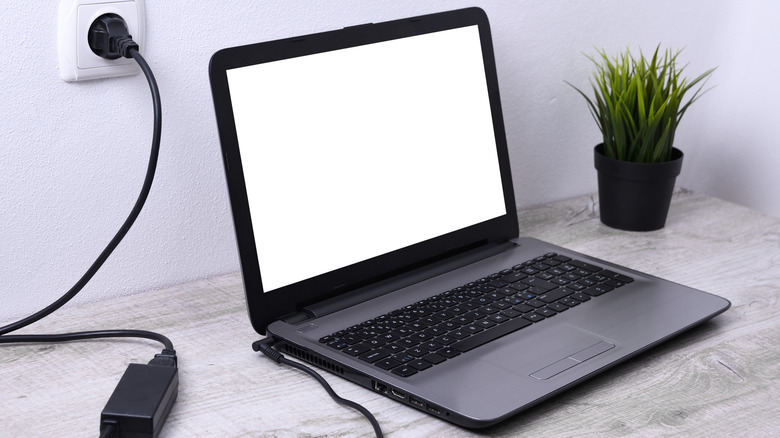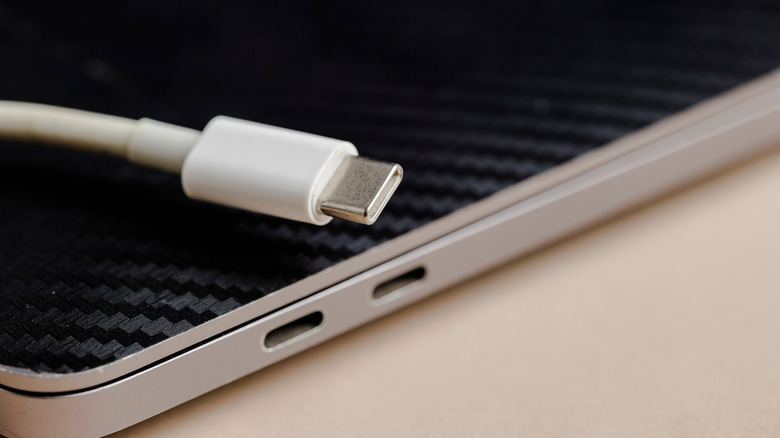Why Do Laptop Chargers Have A Box In The Middle Of The Cable?
We don't pay much attention to the charging cables that come with our laptops, simply plugging them in when the battery is low. As such, we typically ignore the box on the charging cable. However, without that box, our laptops would not be charging at all.
Laptops have become a staple of this digital age. We bring them with us to school, we use them to work from home, and digital nomads depend on them as they travel around the world. The best laptops are the ones that are sleek, charge quickly, and hold power for a long time so that we can be as productive as possible with them.
The key to laptops being so transportable is the box on the charging cable. It's officially referred to as a laptop adapter. It can be considered an external battery component because it is responsible for converting the power from the wall socket to a voltage that is suitable for charging the laptop.
What does the laptop adapter do?
Typically, the power you get from a wall outlet is an alternating current, abbreviated to AC. However, the power that a laptop requires to charge is direct current, or DC. You cannot simply plug in the laptop's cable directly into the wall power outlet, as it won't be able to supply the correct type of voltage.
That's where the charging cable's box, or laptop adapter, comes in. It converts the AC to DC. (It's fairly easy to remember if you like rock music.) As for why it's a box on the charger cable rather than part of the computer itself, it's more convenient for the laptop adapter to be external rather than internal because it would take up valuable space inside a computer whose purpose is to be thin, sleek, and easily transportable.
The standard charging cable has a circular connector that you plug into your laptop to charge it. However, this is not universal, given the European Union's efforts to make USB-C connectors the norm, thus simplifying the charging process and reducing excess materials. USB-C chargers are unique in that they can manipulate the voltage and current to meet the needs of whatever it is they are charging, laptops included. But you can't simply go online and purchase one of these and start charging your computer. Only newer models are designed with USB-C chargers, and the laptop must be built with that specific function in mind. Otherwise, you need a laptop adapter converter.
Why do laptops need DC power at all?
Electrical power plants generate AC power because the alternating motion its power moves in allows it to travel farther. So it is ideal for things like office buildings and houses because it can be easily available at every wall outlet.
The DC's linear movement means it won't travel as far, but things like laptop batteries prefer DC power because it is a consistent, direct voltage. The alternating waves of AC power can cause internal issues with laptops if they were to use it directly.
In the end, that little box on your laptop charger plays a huge role in keeping your device running smoothly. It quietly handles the heavy lifting of converting electrical energy into a safe, usable form your laptop can work with. As laptop charging technology continues to advance, we can look forward to more innovations like Apple's MacBook Air that has all-day battery life, and perhaps one day we all might be using USB-C connectors to power our laptops regardless of the power supply.


